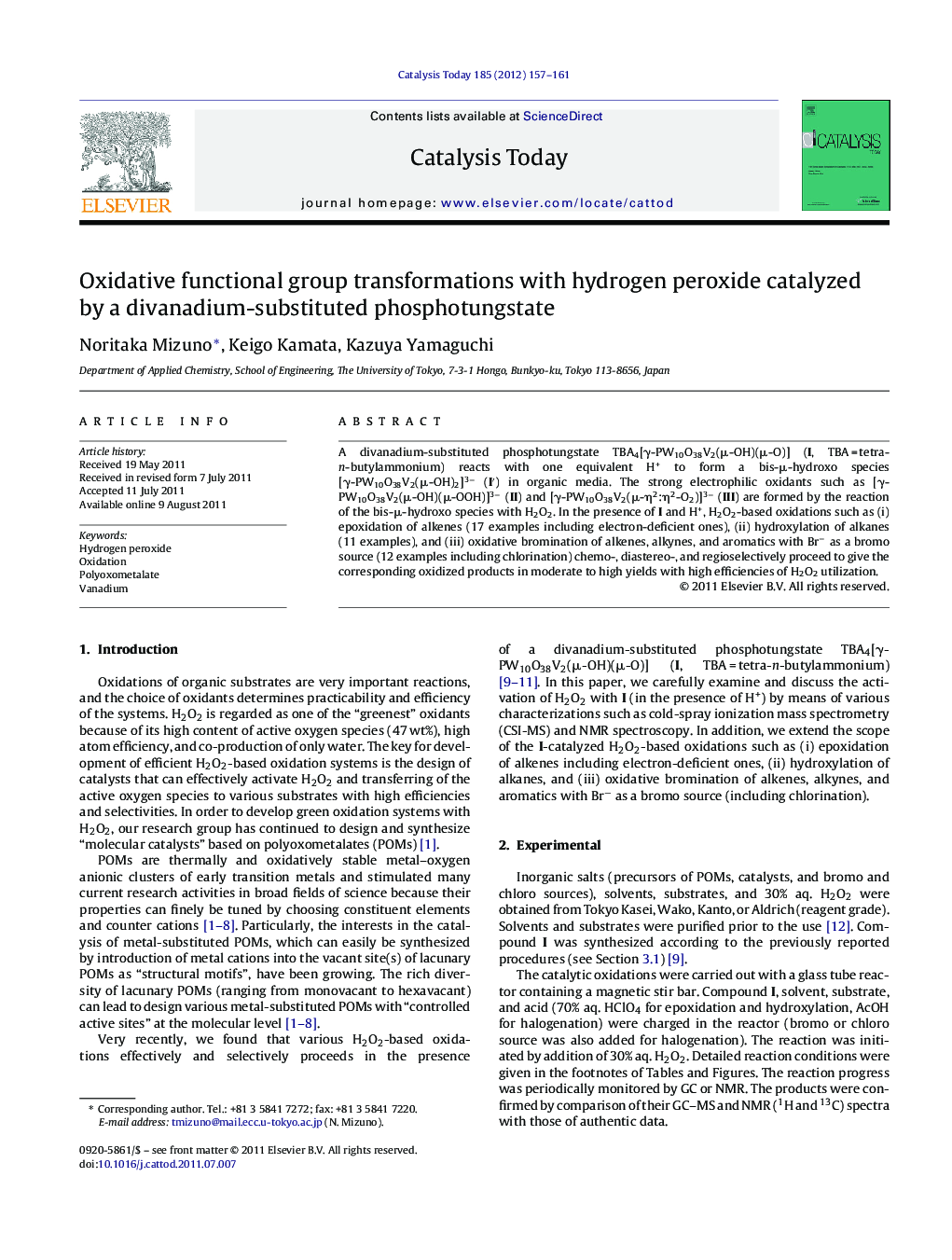| Article ID | Journal | Published Year | Pages | File Type |
|---|---|---|---|---|
| 55518 | Catalysis Today | 2012 | 5 Pages |
A divanadium-substituted phosphotungstate TBA4[γ-PW10O38V2(μ-OH)(μ-O)] (I, TBA = tetra-n-butylammonium) reacts with one equivalent H+ to form a bis-μ-hydroxo species [γ-PW10O38V2(μ-OH)2]3− (I′) in organic media. The strong electrophilic oxidants such as [γ-PW10O38V2(μ-OH)(μ-OOH)]3− (II) and [γ-PW10O38V2(μ-η2:η2-O2)]3− (III) are formed by the reaction of the bis-μ-hydroxo species with H2O2. In the presence of I and H+, H2O2-based oxidations such as (i) epoxidation of alkenes (17 examples including electron-deficient ones), (ii) hydroxylation of alkanes (11 examples), and (iii) oxidative bromination of alkenes, alkynes, and aromatics with Br− as a bromo source (12 examples including chlorination) chemo-, diastereo-, and regioselectively proceed to give the corresponding oxidized products in moderate to high yields with high efficiencies of H2O2 utilization.
Graphical abstractFigure optionsDownload full-size imageDownload high-quality image (185 K)Download as PowerPoint slideHighlights► The strong electrophilic oxidants such as [γ-PW10O38V2(μ-OH)(μ-OOH)]3− and [γ-PW10O38V2(μ-η2:η2-O2)]3− are formed by the reaction of TBA4[γ-PW10O38V2(μ-OH)(μ-O)] (in the presence of H+) with H2O2. ► These electrophilic oxidants can efficiently catalyze various oxidations such as (i) epoxidation of alkenes including electron-deficient ones, (ii) hydroxylation of alkanes, and (iii) oxidative bromination of alkenes, alkynes, and aromatics with Br− as a bromo source. ► Oxidations chemo-, diastereo-, and regioselectively proceed to give the corresponding oxidized products in moderate to high yields with high efficiencies of H2O2 utilization.
